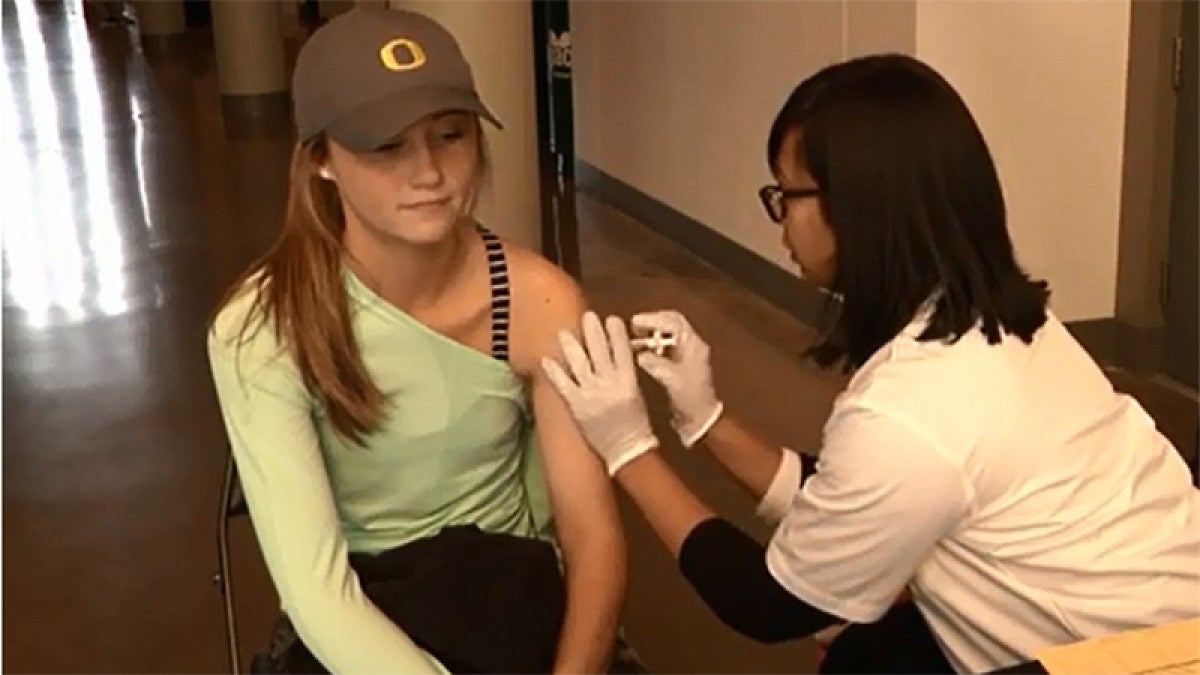The final IntroDUCKtion sessions have concluded for the incoming class of University of Oregon students, and many of them already have high marks from campus and public health officials.
As part of an ongoing effort that strongly encourages students to be informed about and receive a meningitis B vaccination, 10 immunization clinics were held during the two-day orientation sessions.
In total, approximately 1,400 incoming students agreed to roll up a shirt sleeve for the first dose in the vaccination series while visiting campus. Others indicated they would visit a pharmacy, such as Safeway, Albertson’s or Walgreens, in their hometowns before beginning fall term.
“It is great to have more than 40 percent of freshmen who attended IntroDUCKtion begin their vaccination series,” said Krista Dillon, UO’s assistant director of emergency management and continuity. “Students and parents are more knowledgeable about the vaccination efforts on our campus and across the U.S. to protect individuals and they are taking action to protect themselves.”
The timing of the IntroDUCKtion sessions — from late June to early August — works well to get incoming students on track to receive a second vaccination at the large-scale vaccination clinic scheduled for Oct. 5-6 at Matthew Knight Arena, during the second week of fall term.
While many freshmen are beginning their series of shots, the October clinic will be the end of the road for thousands of returning students.
For returning students who began the three-shot series this past winter, the October clinic will complete the series for the highest level of protection against the infectious disease that resulted in the death of a UO student last year.
UO officials expected the vaccination drive to be a sustained effort, and it is expected to remain a priority for health education and recommendations to students and parents in the next year.
“Our work to focus on students living in residence halls and Fraternity and Sorority Life situations has been very successful,” Dillon said.
Sixty-one percent of students who lived in the residence halls during winter term and 61 percent of students affiliated with Fraternity and Sorority Life have been vaccinated to date. In addition, data indicate that half of male students received a first dose, and while female students had lower participation rates, they were more than twice as likely to return for a second dose if they started the recommended series of shots.
“More than 11,000 of our students are protected from a dangerous illness that they were previously vulnerable to, so our campus is stronger day by day,” Dillon added. “And we have a head start with incoming freshmen.”
More information is at meningitis.uoregon.edu.
— By Julie Brown, Enterprise Risk Services


